By Christine Baek, Northeast-Midwest Institute Intern and Brown University Student
The story of the Cuyahoga River is one of environmental resurgence and resilience, featuring at least 14 times that it has caught fire and decades of intense restoration efforts that make the Cuyahoga one of the most socially significant bodies of water in the country.
Flowing from northeast Ohio into Lake Erie, the Cuyahoga River first reached national news when it ignited in 1969. Heavy industrial pollution in the area had left the water covered in brown film and pockets of floating black oil, creating the perfect conditions for a blaze.
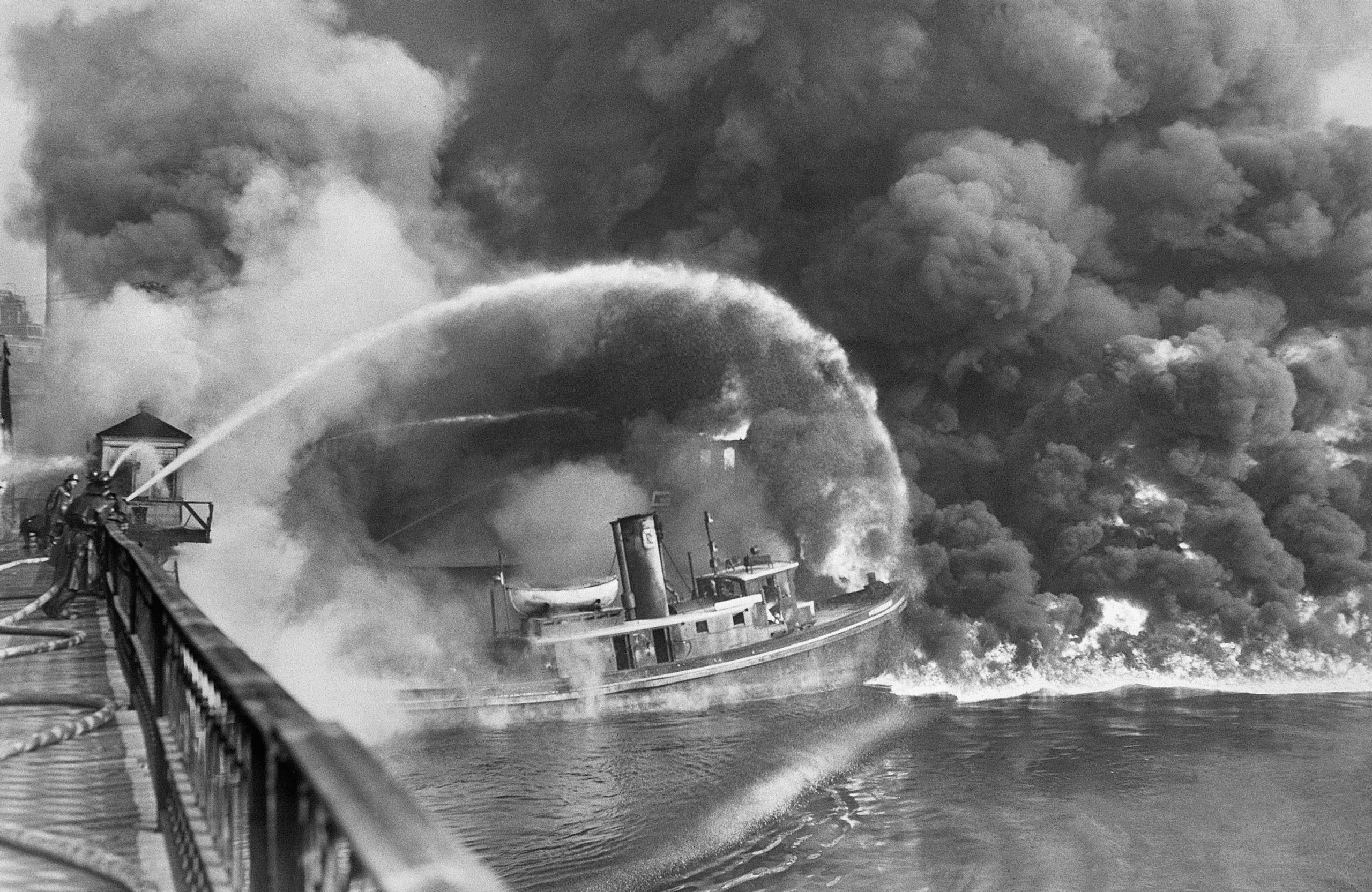
The Cuyahoga River on fire in 1952
Credit: Tullio Saba
In 1969, Time Magazine’s August Issue launched the magazine’s first feature on the environment, which included Cleveland and the Cuyahoga. The article paired with photos capturing an earlier conflagration in 1952 – there were no photos of the full 1969 fire which only lasted 30 minutes – provided a scathing commentary on the Cuyahoga:
“Some river! Chocolate-brown, oily, bubbling with subsurface gasses, it oozes rather than flows. ‘Anyone who falls into the Cuyahoga does not drown,’ Cleveland’s citizens joke grimily. ‘He decays.’ The Federal Water Pollution Control Administration dryly notes: ‘The lower Cuyahoga has no visible life, not even low forms such as leeches and sludge worms that usually thrive on wastes.’ It is also – literally – a fire hazard. A few weeks ago, the oil-slicked river burst into flames and burned with such intensity that two railroad bridges spanning it were nearly destroyed. ‘What a terrible reflection on our city,’ said Cleveland Mayor Carl Stokes sadly.”
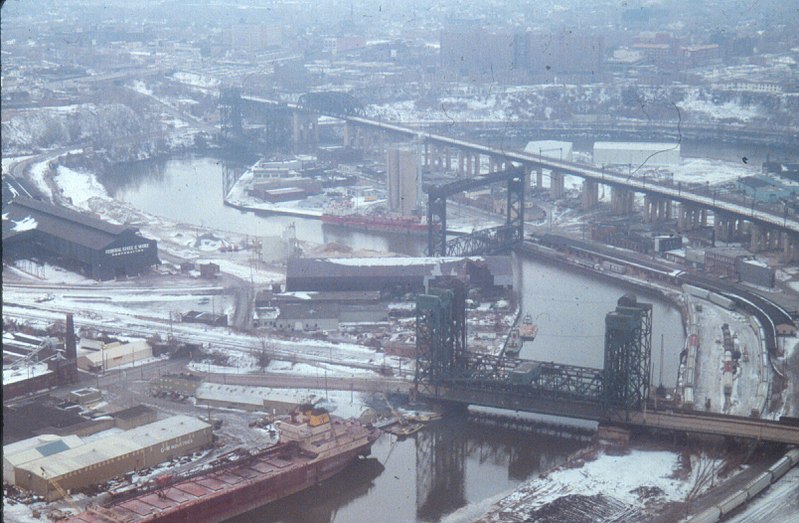
An aerial view of the Cuyahoga River circa 15 June 1985
Credit: Chris Light
With this image seared into the minds of the nation, the 1969 Cuyahoga River fire catalyzed a wave of landmark environmental action, including the creation of the federal Environmental Protection Agency (EPA) and the Ohio EPA, the passage of the Clean Water Act, and the 1972 signing of the Great Lakes Water Quality Agreement (GLWQA) by the United States and Canada.
The GLQWA established the Great Lakes Areas of Concern (AOCs), “geographic areas designated by the Parties where significant impairment of beneficial uses has occurred as a result of human activities at the local level,” with the purpose of restoring water quality and ecological integrity to our planet’s largest freshwater system. The GLWQA designated 43 Great Lakes sites as AOCs, including the Cuyahoga River, with target areas of restoration categorized under 14 federal Beneficial Use Impairments (BUIs, see graphic below). Since its inception, nine sites so far have seen all their BUIs removed, with the most recent AOC delisting of the Ashtabula River taking place in 2021. Established in 1987, the Cuyahoga AOC stretches over 46 miles from the Gorge Dam to Lake Erie and also includes other nearby impacted Lake Erie tributaries, such as Doan Brook and Euclid Creek, making it one of the largest AOCs.
To get a better understanding of the collaborative efforts behind the river’s restoration, a series of interviews were conducted with federal and state agencies, metropark systems, and watershed stewardship groups in the Cuyahoga AOC.
The Cuyahoga River Now
The Cuyahoga River, starting out with 10 BUIs and an infamous reputation, is now on the road to delistment by 2030, with 5 out of 10 BUIs removed. The process behind researching, evaluating, and removing each BUI is unique and demands a distinct set of projects among the site’s many collaborators. With 14 ongoing projects in the Cuyahoga, one of the AOC’s most recent accomplishments was the Canal Diversion Dam removal, which allowed the Cuyahoga River to free-flow in Brecksville for the first time in over 190 years. This project, among others including the next big $150 million Gorge Dam removal and sediment remediation, has been funded in part by the Great Lakes Legacy Act (GLLA) and its successor the Great Lakes Restoration Initiative (GLRI), which has invested over $4 billion into Great Lakes projects over its lifetime.
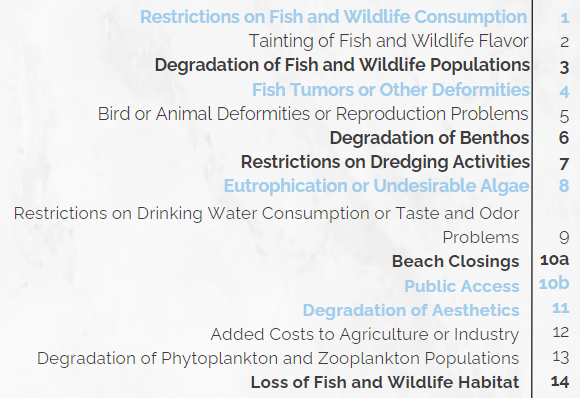
The 14 Federal Beneficial Use Impairments under the GLWQA,
including the 10 initially afflicting the Cuyahoga
light blue: Cuyahoga BUI removed
black bold: Cuyahoga BUI remaining
Credit: Christine Baek
Hannah Boesinger, Northeast Areas of Concern Coordinator at the Ohio Lake Erie Commission, working closely with local, state and federal partners, helps oversee a range of these remediation and restoration projects, from dam removals to restoring fish habitat. Having grown up in the Cuyahoga AOC and beginning her work in that realm a little over a year ago through her current role, Boesinger explains, “It’s crazy to be involved in this world at this point, knowing that this has been decades in the making, and GLRI has accelerated the clean ups of those AOCs in Ohio, as well as our other Great Lakes AOCs.”
Describing her role, she says: “I play a small part in this whole process. But we have a ton of partners that I collaborate with in order to get this work done.” Frequent collaborators include the Ohio EPA, the Federal EPA’s Great Lakes National Program Office, and the U.S. Army Corps of Engineers. “And the public,” Boesinger adds. “One of the things I enjoy the most is interacting with the public, and getting to share the message of the Cuyahoga and all of our Ohio AOCs with people that may not know a whole lot about them. It’s where they live. It’s their own backyard, and they always end up being really interested in wanting to be more involved as well.”
Nichole Lopez, Watershed Coordinator at the Cuyahoga Soil & Water Conservation District, also highlights the collaboration and the effort that has been put into the Cuyahoga AOC: “Northeast Ohio is very unique, where it is saturated with all of these different organizations and communities and advocates and watershed stewards who are putting in so much time, so much effort, so much money into it. And a lot of the time it’s not celebrated enough. I feel like people are not getting credit to where credit is due.”
While Lopez’s work focuses on the Cuyahoga River AOC, she explains, “You have the larger watershed of the Cuyahoga River, and then you have the subwatershed or tributaries that are integrated into the water. That’s the beauty of having all of these partners and organizations who work within the Cuyahoga River Area of Concern, because some of them just focus on a specific watershed. At least, we have somebody who is focusing on that specific area, and they can be a lot more effective and engaging when it comes to reaching those goals.”
Jennifer Grieser, Director of Natural Resources at Cleveland Metroparks and Chair of the Cuyahoga Advisory Committee, remembers the uphill battle for every BUI removal and every delistment: “I guess that’s one thing that I worry about. They talk about how short people’s memories are, or if you haven’t lived that history, then you might not have the same care or caution about reliving past mistakes. And so I think about our upcoming generations. And how do we maintain their environmental stewardship and maintain the gains that we’ve had our predecessors work so hard to bring.
“It’s going to look drastically different in the next 10 to 20 years. People are always skeptical- ‘Oh, another plan. And it’s just going to sit on the shelf.’ But this plan [Remedial Action Plan] has actually gone from plan to action almost seamlessly. It’s just the messaging that no act is too small, that we all live in a watershed and collectively we can all contribute to the success that can and is happening. And it’s an exciting time to be in this field because it definitely has taken decades of work prior to us. But now we’re seeing those results.”
⼮
What do you wish more people knew about the Great Lakes and AOCs?
Sarah Barrow, Cuyahoga River Watershed Coordinator at Summit Soil & Water Conservation District:
People don't realize how much lives in the water. They think I'll fish, live here, and maybe get some plants. But when you show them the whole aquatic ecosystem that's living there, and how we can affect them just based on simple choices. It connects some different dots for individuals and makes it a little more real.
Amy Roskilly, Conservation Education & Communications Manager at the Cuyahoga Soil & Water Conservation District:
We weren't the only city with the burning river. Cities like Pittsburgh, Buffalo, Detroit also have burning rivers because you had industries and factories that could dump whatever they wanted into our waterways completely untreated. We just have the notoriety of it because of that lovely Time Magazine article.
50 plus years later, people, even here in Cleveland are still thinking that our rivers and our streams and Lake Erie is equally as polluted as it was back then. We're the ‘mistake on the lake.’ We've all heard the very tired expressions about our town and our river but that's no different than any other city.
Jennifer Grieser, Director of Natural Resources at Cleveland Metroparks and Chair of the Cuyahoga Advisory Committee:
There are a lot of success stories. There weren't a whole lot of those success stories before GLRI came on board. The AOCs were set up in the late 1980s, but you didn't start to see impairments get removed. Cuyahoga, for instance, its first impairment removal was in 2017.
A large key to our success story is that we celebrated the last time the Cuyahoga River burned in 2019, and with the Cuyahoga River being a national story of success and environmental resilience. It takes a variety of mechanisms and dedicated funding to see this progress.
⼮
Amy Roskilly, having worked at the Cuyahoga Soil & Water Conservation District over the last 17 years, reflects on the Cuyahoga community after the 1969 fire. The attention from the Time Magazine article “opened a path for us to be quirky about it. Cleveland has burning river beer. They have burning river roller girls. They have all these burning river-themed things that take that history, that terrible thing that happened, and turn it into something where you can promote it and where you can get people on board. Being a part of the cleanliness of it and the improvement of it by embracing what happened to us.” She says: “I love that about our city and our county and this area. Because you can take that and turn it into something positive. Because we’re not going to hide it, you know– let’s make a beer out of it.”
As Conservation Education & Communications Manager, part of Roskilly’s day to day involves raising public awareness of different projects in the AOC and having conversations with community members about what they can do at the individual level. This often means translating overwhelming numbers into simple but effective actions. She gives an example: “There’s a FRONTLINE special called Poisoned Waters. [In the episode] they measured the amount of oil that comes from leaking cars and the amount of oil that leaks into Puget Sound every two years is equivalent to the 1989 Exxon Valdez oil spill.” Roskilly says, “So giving people facts like that and telling them that their individual actions can be more harmful than any industry or factory could ever be. And then giving them actionable steps, things that they can do that are easy for them.”
In the past couple of years, Roskilly has helped the district give out almost 800,000 free soil test kits, host multiple rain barrel workshops and native plant sales a year, and provide training and scholarships for their master rain gardener program. Roskilly concludes: “If we want people to do something, we give them the steps to do it. I can talk until I’m blue in the face, but if I don’t give somebody the steps to do that, then I’ve failed them.”
Sarah Barrow, Watershed Coordinator for the Summit Soil and Water Conservation District and for the Cuyahoga Basin in Summit County, who boasts a tattoo of the Cuyahoga River on her leg, says: “The story of the Cuyahoga River is just so cool. It’s so weirdly shaped– it starts north, and then it flows south, and then it turns and flows north again. Just pick one way! But I think that people who spend time on it or around it really appreciate it. And now we’ve got all these organizations that are dedicating their life to cleaning it up and making it as grand as it should be.”
Three years ago, Barrow and her friend developed the River City Cleanup Series, leading community clean ups at different riverfront parks. “We have pulled two and a half tons of trash out of the river with the help of about 600 community members over the last handful of years,” she says with pride. But reflecting on where she felt she had made the most impact, she says: “While those numbers are cool and impressive, and they make me feel good, the bigger takeaway for me was that we got that many people continually engaged in easy conservation steps that they could execute in their own community. Which was just way cooler, in my opinion, because it’s hard to get people engaged. And so when you can find an initiative that sticks and that keeps people coming back, it feels like a winner.”
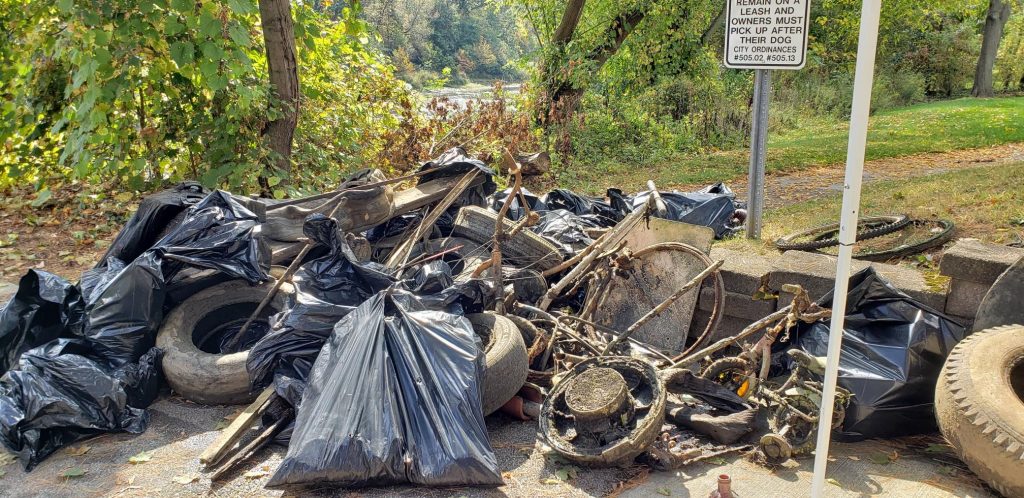
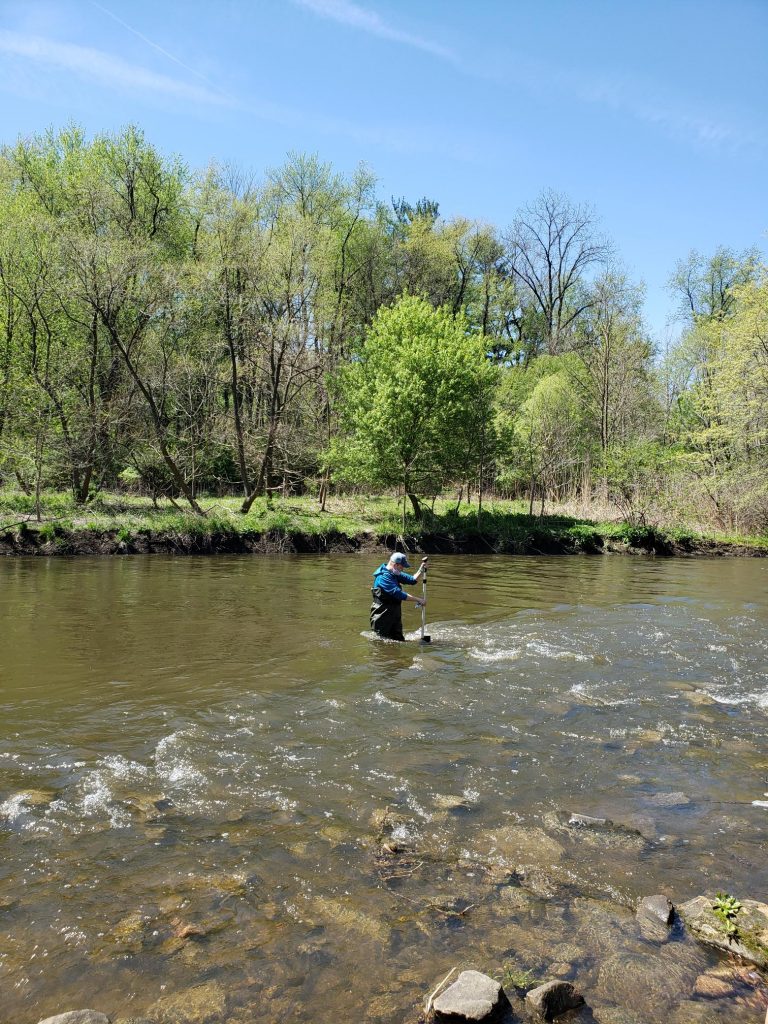

(above center) Trash pulled from the Cuyahoga River
(left) The Cuyahoga River, (right) photo of Sarah Barrow
Credit: Sarah Barrow
⼮
Cuyahoga River NEXT
While the Cuyahoga River is on track to be delisted by 2030, the work of restoration and maintenance doesn’t end there. Even with the end of an AOC, there is still much to be done to make the river and the surrounding area more livable and free for recreation.
The network, too, of agencies, non-profits, and community members dedicated to the Cuyahoga remains. Lopez says, “We all know, since the beginning, this is meant to be a temporary effort. We want [the Cuyahoga] to be delisted. And exactly what comes after that is to be determined. But, northeast Ohio is so rich with all of these partners and organizations that personally, I’m sure that even if the Cuyahoga River AOC is dismantled and it doesn’t exist anymore, there is going to be no gap. So even if there isn’t one organization who takes over, we will still have that collaborative approach that has gotten us to the point where we are today and to the point where we will be able to delist the river.”
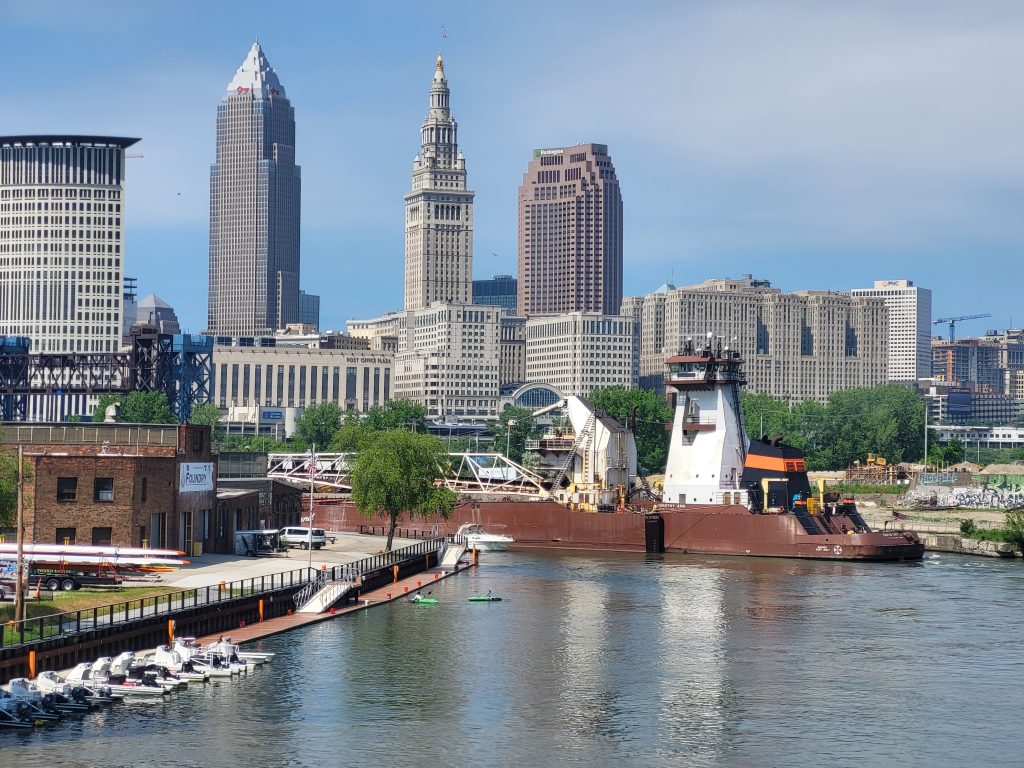
The Cuyahoga River in 2023
Credit: Nichole Lopez
Roskilly agrees, “The Cuyahoga is never going to get back to what it was originally. But it’s going to be a new normal. We’ve got a framework of all of these different agencies putting their eyes collectively on the Cuyahoga and all of our waterways that we’re going to be in a better place than where we started.”
As public awareness and government support of Great Lakes legislation continue to grow, community members and organizations are better equipped to handle rising challenges. Boesinger highlighted this increased flexibility: “Looking into the future there are some new challenges that have emerged across Lake Erie and the other Great Lakes, such as harmful algal blooms. I hope that we can continue to identify those challenges as they emerge, as well as creative solutions to address those challenges and have GLRI to provide the support that we need to do so.”
She looks at the future of the Cuyahoga AOC, at what it can become in the next 10, 20 years with excitement: “I think the possibilities are really endless.”
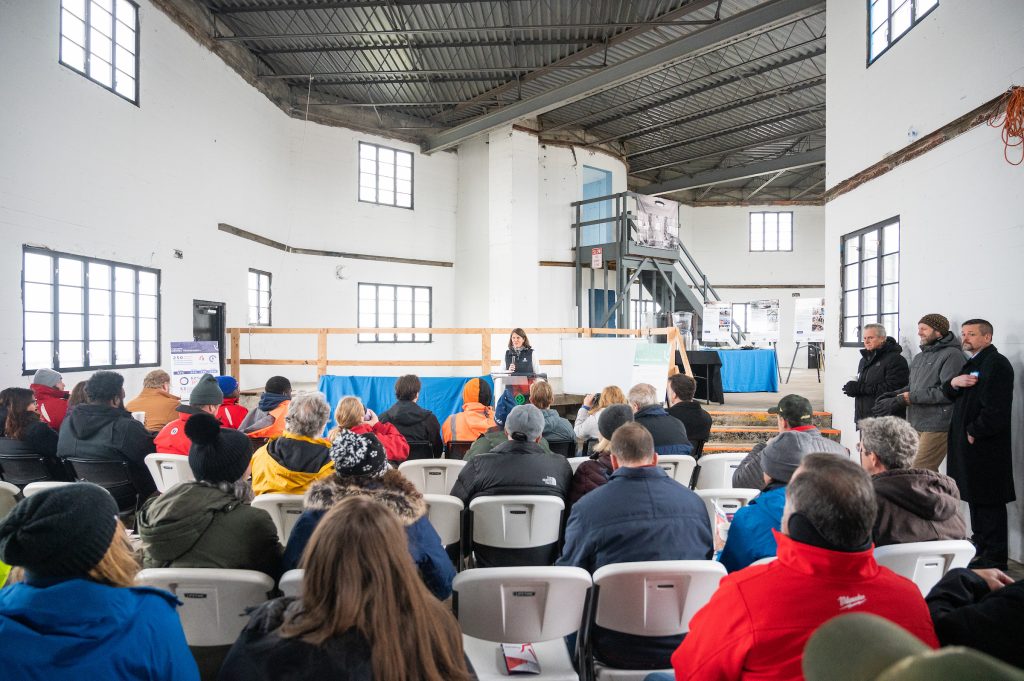
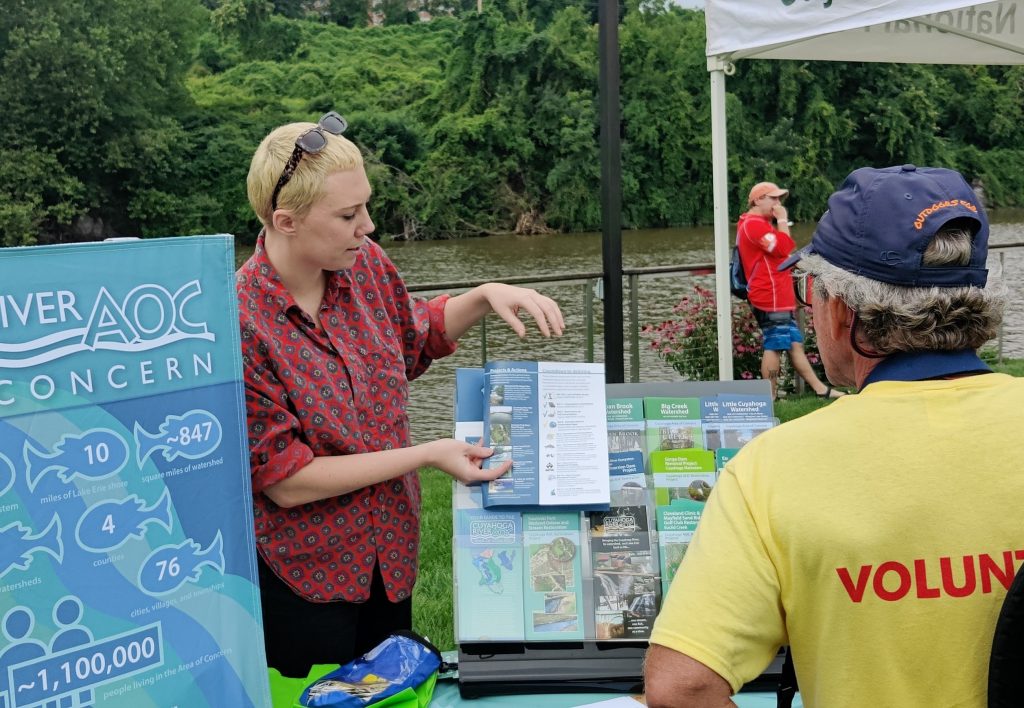
Credit: Nichole Lopez
⼮
about the author
Christine Baek is an Environmental Policy Intern at the Northeast-Midwest Institute (NEMWI) and a student at Brown University, with an interest in stormwater education and sustainable development. Through her position at NEMWI, she hopes to better understand the world of water conservation, and created this project to help draw attention to the achievements and perspectives of community leaders in the Cuyahoga AOC. Her past work includes an internship with the Charles River Watershed Association’s Stormwater Program as well as research in climate change and energy policy at the Climate and Development Lab.